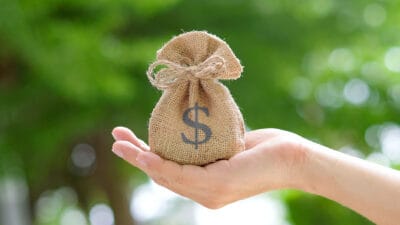Under-the-radar ASX 300 financial services company Helia Group Ltd (ASX: HLI) could be one of the market's true hidden gems. Not only has its share price shot up over 30% in the past six months alone, but it also pays a juicy 6.1% dividend yield.
This is a rare combination. Typically, growth stocks see their dividend yields shrink the more rapidly they grow, while quality dividend shares tend to have relatively stable prices. But Helia has somehow managed the unique feat of both maintaining a dividend yield in the upper echelon of ASX dividend stocks and keeping pace with some of the leading ASX growth stocks.
So, how has Helia done it? And, more importantly, can it keep it up?
What's a Helia, anyway?
Helia is a leading Australian provider of Lender's Mortgage Insurance (LMI).
Typically, when you take out a home loan with a lender, you need to put up a deposit of at least 20% of the property's value before you'll be approved. So, if your property costs a cool $1 million, you need to cough up $200,000 on the spot as a deposit, and the lender will loan you the other $800,000.
The reason for the minimum deposit is pretty intuitive: the more money you can put up yourself as a deposit, the lower the risk you pose to the lender.
However, with LMI, you can often get a loan with a deposit as low as 5%. Instead of putting up the rest of the cash for the deposit, you can buy LMI, which insures the lender against the increased risk that you'll default on your loan.
It's a good arrangement for everyone. The lender is happy because they hedged their risk, you're happy because you only had to put up $50,000 for your $1 million home, and Helia is happy because you're paying them insurance premiums.
Speaking of premiums, what are Helia's financials like?
Glad you asked.
Surprisingly, given its recent gains, Helia's recent financial performance hasn't been that spectacular. In its first-half FY24 financial results, for the six months ending 30 June 2024, Helia reported net profit after tax (NPAT) of $97 million, down 34% versus the prior comparative period.
Its underlying performance wasn't much better, down 22% to $106.5 million, after excluding accounting noise like unrealised losses on its bond portfolio resulting from higher interest rates. In a rising rate environment, newer bonds are issued at higher yields, effectively devaluing older, lower-yielding bonds held in the company's investment portfolio.
Management blamed the decline in underlying earnings on the economic environment, with high interest rates discouraging buyers from taking out high loan-to-value ratio mortgages.
On the positive side, high employment and growth in real wages meant there was only a "modest" increase in mortgage arrears despite cost-of-living pressures. This suggests the Australian property market remains resilient.
So why is its stock price up 30%?
Basically, great capital management.
The company holds large capital reserves, including over $800 million in retained earnings. It uses this war chest to pay dividends to shareholders and conduct on-market buybacks.
A buyback occurs when a company repurchases its own shares from the market, effectively reducing the number of shares on issue. This supports the share price by reducing supply, and it also increases the company's dividend per share, as any future dividends will be spread over fewer shares.
Including transaction costs, Helia spent more than $42 million on share buybacks in 1H24, and distributed almost $135 million in dividends.
Is Helia right for you?
Helia has the capital reserves available to both maintain its dividends and conduct ongoing share buybacks for years to come. It currently holds 2.08 times its prescribed capital amount, and it wants to reduce this to a target range of between 1.4 to 1.6 times.
The company has done well managing a particularly difficult economic environment. This could make it a surprisingly safe defensive stock to add to your portfolio. It will be intriguing to see how it performs when it releases its 2024 financial results on 25 February 2025.









